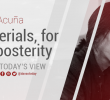In about 60 pages, Jose Ma. Espino’s Into the White Hole (1986; WH) tells the story of twelve-year-old Joey, who discovered a fissure in time-space from his bed after an actual quake (not a metaphorical earth-shaking march of people that ousted a dictator which was an actual event in Philippine history that year). Spoilers ahead.
Espino cited in his preface similar western SF (science fiction), but instead of rabbit holes or portal closets to and fro fantastic worlds, WH’s first few pages reveal the existence of something less spectacular: another bed but not a usual double-deck extension: “[Joey’s] own on the floor and another tilted upwards [45 degrees] from the foot of his bed.” Rather than outlandish creatures, he found doubles of himself; his siblings Louie and Effie; Mom and Dad; and family house-help Rosie. To reach the other reality, one doesn’t “enter” or “exit” through a door-like gateway, one ascends or descends from a bed.
Two crucial “rules” to follow through the narrative: ones from the “lower” albeit identical world are the Ones (i.e. Joey One, etc.), while those from the “upper” world are the Twos (i.e. Joey Two, etc.); and, the absence of a person in the reality where he or she belongs puts that reality in tableau. Thus, when the Ones went up and the Twos went down, both worlds stopped; when all the siblings and their doubles went up, time in the “upper” world advanced, whereas the “lower” one remained still.
By figuring out new “rules” brought about by the bed-time-space rift, the children pulled pranks on adults. While Dad was drinking beer and watching TV, Joeys and Louies took turns in appearing next to their doubles, following the movement of their respective copies; later, doppelgangers part ways and went to different directions. Dad thought he was seeing double due to too much drinking. These events in the novella’s preliminary chapters appeared earlier as a stand-alone short story “Why Dad Gave up Drinking” (1981; WD). In both versions, Joey is twelve; whether the “present” of the story is 1981 or 1986, he was born under Marcos’s regime. Notice the choice of titles: WD echoes the necessary discipline for the sake of nation-building encouraged by Martial Law (ML), while WH implies democracy and mobility—in contrast to the (about-to-be?) overthrown dictatorship that curtailed freedom of movement by imposing curfews and setting checkpoints. Though both versions begin and end in the “lower” world of the Ones, the Twos in WD helped the Ones with their Dad’s drinking problem—merely behavioral; while in WH, the extended playtime among the children culminated in socio-economic sustenance and ascendance of the Ones:
The doubles stayed “up” there for a day, so they took hold of the Wednesday newspaper and kept it “down” here—when it remained Tuesday. The Ones’ parents insisted on knowing what’s going on. Effie revealed everything about the “white hole,” but it was gone when they went to the bedroom. The only evidence left to explain the “mysteries” of doppelgangers and (dis)appearing acts? The newspaper from the “future.” The children expressed how happy their experience had been, and how they sadly wondered why, instead of them, their doubles were “eliminated.” They wanted to show others the newspaper now because tomorrow it will “just be another newspaper.” Dad wanted to “drop” the whole thing and later asked for the business section so he could have a “killing.”
Ironically published under the conjugal dictatorship, WD features children “correcting” Dad’s bad habit. After teaching Dad a lesson on moderating alcohol consumption, an earthquake shook the other bed a bit, warning the Twos to get back “up”; concerned Ones told the Twos to hurry, else they will be trapped “down” here. The Twos did so, the upper bed trembled into nonexistence and everything went back to normal. Most of the content in WD was lifted and reproduced the first half of WH, save for the latter’s “revisions” that include the conversation when children coined “white hole” and the moment of business opportunity when the “hole” closed.
Besides having as bookends a preface that addresses “younger readers” and a list of “other New Day books for children,” simple sentences and illustrations by Maquette Indolos attest the intended target audience of 15-part WH. Interestingly, the absence of drawings in WD tolerates different imagined physical appearances of Joeys, Louies, and Dads, since Espino never detailed in his prose what they look like. Unlike readers of the 1986 novella who were provided with visual details of selected scenes, readers of the 1981 short story were provided with gaps and spaces to be filled—from the looks of the characters to the possibilities of thought experiments in accordance with the diegetic world’s spatial and temporal laws.
Both versions imply timelessness because there are no recognizable historically specific indicators with regards the setting; hence the “present” of the story may be the “present” of publication year when privileged families remain safe in their houses during an earthquake—the only damage to property was a crack in time-space, a momentary panic. Time manipulation was a recurring theme in the short story and the novella. However, WD ends with: “And that’s why Dad gave up drinking” while WH with: “Dad was a stockbroker”; the former a promising change in attitude, the latter in net worth. In WD, sons covertly disciplined Dad; in WH, Dad interrogated the children and capitalized on their innocent discovery to beat the game of the always-already rigged system of commerce.
Unlike children in the earlier story who kept their secret among themselves (an unrealized act of solidarity?), those in the stretched novella spilled the beans (a capitulation?). Dad succumbed to sons’ collective action in WD, but regained composure as patriarch in WH, as it was business as usual: democracy for those who took something from another world, a butterfly effect in 1986 from a non-mosquito press that belonged to an “eliminated” future. (davaotoday.com)






